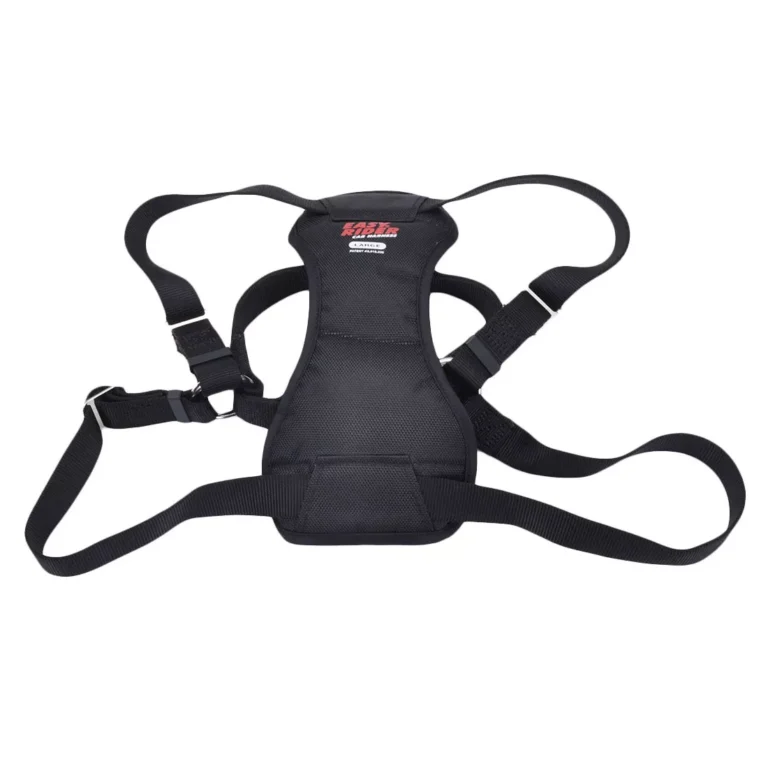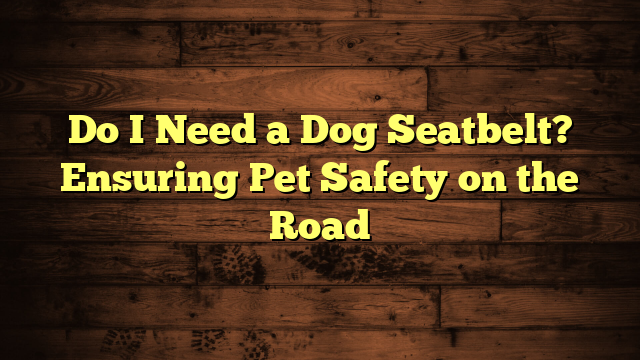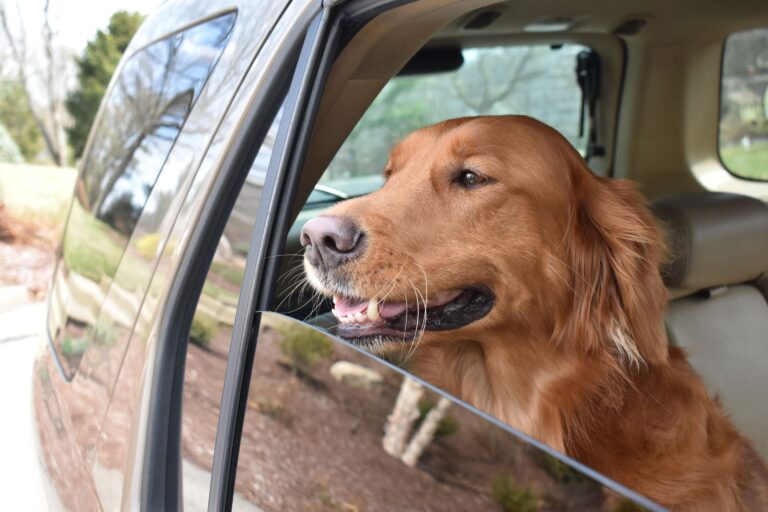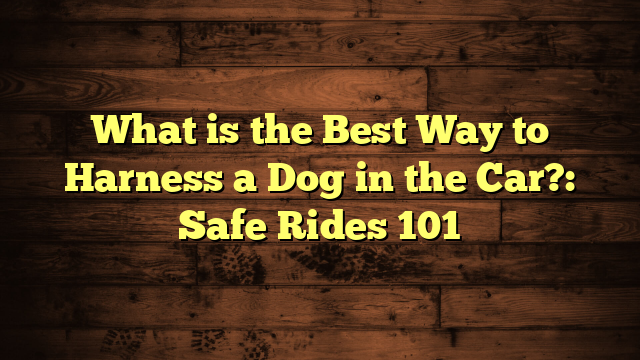What are Signs of Anxiety in Dogs? Key Indicators Explained
Signs of anxiety in dogs include excessive barking, trembling, pacing, and destructive behavior. Other indicators are restlessness, drooling, and panting.
Dogs, like humans, can experience anxiety. Recognizing the signs early helps in managing and alleviating their distress. Anxiety in dogs can stem from various factors, including changes in their environment, separation from their owner, or traumatic experiences. Common signs include excessive barking, trembling, pacing, and destructive behavior.
Restlessness, drooling, and panting also indicate anxiety. Identifying these symptoms promptly is crucial. Addressing the root cause and providing comfort can significantly improve your dog’s well-being. Understanding and compassion play vital roles in helping your furry friend feel secure and relaxed.
Introduction To Canine Anxiety
Dogs are our best friends. They can feel anxious just like people. Canine anxiety affects many dogs. It shows through different behaviors. Knowing the signs helps us care for them better. This guide will help you understand and spot anxiety in dogs.
Recognizing Anxiety In Dogs
Understanding the signs of anxiety in dogs is crucial. Common signs of anxiety include:
- Excessive barking or whining
- Pacing or restlessness
- Destructive behavior like chewing furniture
- Trembling or shaking
- Excessive licking or grooming
- Hiding or seeking comfort
- Changes in appetite
These behaviors show your dog might be anxious. Paying attention to these signs helps in taking the next steps.
Why It’s Important To Identify Anxiety Early
Early identification of anxiety is key to preventing further issues. Anxiety can lead to health problems if not addressed. It can cause:
- Weakened immune system
- Chronic stress
- Digestive issues
- Increased aggression
Catching anxiety early helps in providing the right care. It ensures your dog stays healthy and happy. Proper care includes:
- Consulting a vet
- Behavioral training
- Providing a safe environment
- Using anxiety-reducing tools
These steps help manage anxiety effectively. Remember, your dog’s well-being is in your hands.
Physical Symptoms Of Anxiety In Dogs
Dogs often show anxiety through physical symptoms. These signs can be subtle or obvious. Recognizing these symptoms can help you comfort your furry friend. Below are some common physical symptoms of anxiety in dogs.
Excessive Panting And Drooling
Panting and drooling are normal behaviors for dogs. But, if your dog pants or drools more than usual, it may be anxious. Pay attention to your dog’s breathing. Rapid or heavy panting is a clear sign of stress. Excessive drooling can also mean your dog is nervous or scared.
Persistent Pacing And Restlessness
Persistent pacing is another sign of anxiety. If your dog can’t stay still, it may be feeling stressed. Watch for continuous movement around the house. Restlessness can also show up as frequent shifting or adjusting in its bed. Dogs may also circle around a particular spot repeatedly.
| Symptom | Description |
|---|---|
| Excessive Panting | Rapid or heavy breathing not caused by exercise or heat. |
| Excessive Drooling | More saliva than usual, often with a nervous expression. |
| Persistent Pacing | Continuous movement around the house, unable to settle down. |
| Restlessness | Frequent shifting or adjusting in bed, or circling a spot. |
Behavioral Changes As Anxiety Indicators
Dogs often show anxiety through changes in behavior. Recognizing these changes is crucial for their well-being. Some common behavioral changes include sudden aggression, submission, and destructive actions.
Sudden Aggression Or Submission
Anxiety can cause dogs to act aggressively or submissively. A normally calm dog might start growling or snapping at people. This sudden aggression can be a sign of fear or stress.
On the other hand, some dogs may become overly submissive. They might cower, tuck their tail, or avoid eye contact. These behaviors show that the dog is feeling anxious and insecure.
Destructive Actions And Chewing
Destructive actions, like chewing on furniture or shoes, can be a sign of anxiety. Dogs might chew or scratch objects to cope with their stress.
These actions are not just bad habits. They are signals that your dog is feeling anxious. Providing proper toys and safe spaces can help reduce these behaviors.
| Behavior | Possible Cause |
|---|---|
| Sudden Aggression | Fear or Stress |
| Overly Submissive | Insecurity or Anxiety |
| Destructive Chewing | Stress Relief |
Understanding these signs can help you address your dog’s anxiety. It is important to provide a safe and comforting environment for them.
Vocalization And Noise Sensitivity
Vocalization and Noise Sensitivity are common signs of anxiety in dogs. Dogs express their feelings through sounds. Loud noises often cause stress. Below, we explore two key aspects of this behavior.
Increased Barking And Whining
Dogs often bark and whine to communicate. But, increased barking and whining can mean anxiety.
- Constant Barking: Dogs may bark more when they feel anxious.
- Persistent Whining: Whining can be a sign of discomfort and stress.
- Vocalizing at Night: Dogs may bark or whine more during the night. This can show they are feeling insecure.
Reactions To Loud Noises And Events
Noise sensitivity is another sign of anxiety in dogs. They may react strongly to loud sounds.
- Startling Easily: Dogs may jump or run when they hear a loud noise.
- Hiding or Cowering: Dogs might hide or seek shelter during noisy events. Fireworks and thunderstorms are common triggers.
- Trembling: Shaking can occur when dogs hear loud or sudden sounds.
Understanding these signs helps in addressing your dog’s anxiety. Your dog relies on you for comfort and security.
Physical Discomfort And Health Issues
Dogs can experience anxiety just like humans. Anxiety in dogs can manifest through physical discomfort and health issues. These signs are often overlooked. Recognizing these symptoms can help you provide better care for your furry friend.
Changes In Appetite And Digestive Problems
One of the first signs of anxiety in dogs is a change in appetite. Some dogs may eat less or refuse food. Others may start eating more than usual. These changes are often accompanied by digestive problems. You may notice symptoms like:
- Vomiting
- Diarrhea
- Constipation
- Excessive drooling
Monitoring your dog’s eating habits can provide clues about their anxiety levels. Consistent digestive issues should prompt a visit to the vet.
Skin Conditions And Allergies
Anxiety can also cause skin conditions in dogs. These might include excessive scratching, licking, or biting at their skin. Common signs include:
- Redness and inflammation
- Hair loss
- Hot spots
- Dry, flaky skin
Allergies can also be a sign of anxiety. These might manifest as:
- Frequent ear infections
- Itchy, watery eyes
- Swelling or hives
Consult your vet if you notice these symptoms. They can help determine if anxiety is the root cause.

Credit: www.animalhealthfoundation.org
Separation Anxiety In Dogs
Separation anxiety in dogs is a common issue that many pet owners face. It occurs when a dog becomes overly attached to their owner and feels extreme distress when left alone. Recognizing the signs early can help in managing this condition effectively.
Symptoms When Left Alone
When dogs suffer from separation anxiety, they exhibit specific behaviors. These symptoms can vary in severity but often include:
- Excessive barking or howling: Dogs may bark or howl persistently when they are alone.
- Destructive behavior: Chewing furniture, scratching doors, or tearing cushions can occur.
- Indoor accidents: House-trained dogs might urinate or defecate inside the house.
- Pacing: Dogs might walk in circles or follow a specific path repetitively.
- Escaping attempts: Dogs may try to escape through doors or windows.
Preventing And Managing Separation Anxiety
Preventing and managing separation anxiety requires patience and consistency. Here are some effective strategies:
- Gradual desensitization: Leave your dog alone for short periods, gradually increasing the time.
- Create a safe space: Provide a comfortable and secure area for your dog when you are not at home.
- Establish a routine: Consistent feeding, walking, and playtimes can help reduce anxiety.
- Interactive toys: Use puzzle toys or treat-dispensing toys to keep your dog engaged.
- Professional help: Consult a veterinarian or a dog behaviorist for severe cases.
| Behavior | Possible Cause |
|---|---|
| Excessive Barking | Stress from being alone |
| Destruction | Frustration or boredom |
| Indoor Accidents | Anxiety and lack of control |
| Pacing | Restlessness and stress |
| Escaping Attempts | Desperation to find the owner |
By understanding and addressing these symptoms, you can help your dog feel more secure and relaxed when left alone.
Fear-related Anxiety
Fear-related anxiety is common in dogs. It can cause various behavioral changes. Understanding these changes helps in managing your dog’s anxiety.
Identifying Fear Triggers
Recognizing what scares your dog is crucial. Common triggers include loud noises, strangers, and new environments. Knowing these can help in creating a safer space for your pet.
- Loud Noises: Thunderstorms, fireworks, and vacuum cleaners often scare dogs.
- Strangers: New people in the house can make your dog nervous.
- New Environments: Unfamiliar places can cause anxiety in dogs.
Helping Your Dog Overcome Fear
Helping your dog overcome fear requires patience. Start by creating a safe and calm environment.
| Steps | Description |
|---|---|
| 1. Safe Space | Provide a cozy area where your dog feels secure. |
| 2. Gradual Exposure | Introduce your dog slowly to triggers in a controlled way. |
| 3. Positive Reinforcement | Reward your dog for calm behavior with treats and praise. |
Using these methods can help your dog feel more secure. Remember, consistency is key. Your dog will start to feel less anxious over time.
Age-related Anxiety And Cognitive Dysfunction
As dogs age, they may experience age-related anxiety and cognitive dysfunction. These conditions can be distressing for both pets and their owners. Understanding the signs and learning how to support older dogs can improve their quality of life.
Understanding Senior Dog Anxiety
Senior dogs may exhibit new behaviors that indicate anxiety. These can include increased barking, restlessness, or changes in sleeping patterns. Some dogs may become more clingy or show aggression. Recognizing these signs is crucial for providing the right care.
Physical symptoms can also manifest. These might include trembling, panting, or pacing. A decline in appetite or sudden house soiling could also be signs of anxiety. Monitoring these symptoms helps in early intervention.
Supporting Older Dogs With Anxiety
To support older dogs with anxiety, create a calm and predictable environment. Consistent routines can help reduce stress. Provide a quiet space where your dog feels safe.
Consider using supplements or medications prescribed by a vet. These can help manage anxiety symptoms. Regular vet check-ups are essential to monitor health and adjust treatments as needed.
Mental stimulation is also important. Engage your dog with age-appropriate toys and activities. Short, frequent walks can provide physical exercise without overwhelming them.
| Signs of Anxiety | Potential Solutions |
|---|---|
| Increased Barking | Provide a calm environment |
| Restlessness | Maintain a consistent routine |
| Trembling | Consult with a vet for supplements |
| Changes in Sleeping Patterns | Ensure a comfortable sleeping area |
| Pacing | Engage in gentle exercise |
Anxiety in senior dogs can be managed with care and attention. Observing your dog’s behavior and providing appropriate support can make a significant difference.
Strategies For Alleviating Anxiety In Dogs
Dogs can experience anxiety just like humans. Recognizing the signs is crucial. Once you know, you can take steps to help your furry friend feel better. Here are some effective strategies to alleviate anxiety in dogs.
Training And Behavior Modification Techniques
Training and behavior modification are essential. They help dogs manage their anxiety. One effective method is desensitization. This involves gradually exposing your dog to the source of their anxiety in a controlled way. Pair this exposure with positive reinforcement. This helps your dog develop a more positive association with the trigger.
Counter-conditioning is another valuable technique. It aims to change your dog’s negative reaction to a positive one. For example, if your dog is afraid of the vacuum, offer treats when the vacuum is on. This helps create a positive connection.
Hiring a professional dog trainer can also be beneficial. They can provide personalized guidance and support. Consistency is key in any training method. Regular practice helps reinforce new, calm behaviors.
The Role Of Exercise And Diet
Exercise plays a significant role in reducing anxiety. Regular physical activity helps burn off excess energy. It also releases endorphins, which can improve your dog’s mood. Aim for at least 30 minutes of exercise each day.
Diet is equally important. A balanced diet supports overall health, including mental well-being. Foods rich in omega-3 fatty acids can have a calming effect. Consider adding fish oil or flaxseed to your dog’s diet.
Here’s a simple table outlining some anxiety-reducing foods:
| Food | Benefits |
|---|---|
| Fish Oil | Rich in omega-3 fatty acids |
| Sweet Potatoes | High in fiber and vitamins |
| Blueberries | Antioxidants for brain health |
| Turkey | Contains tryptophan, which can calm dogs |
Ensuring your dog has a balanced diet and regular exercise can significantly reduce anxiety. These strategies, combined with training, can make a big difference.
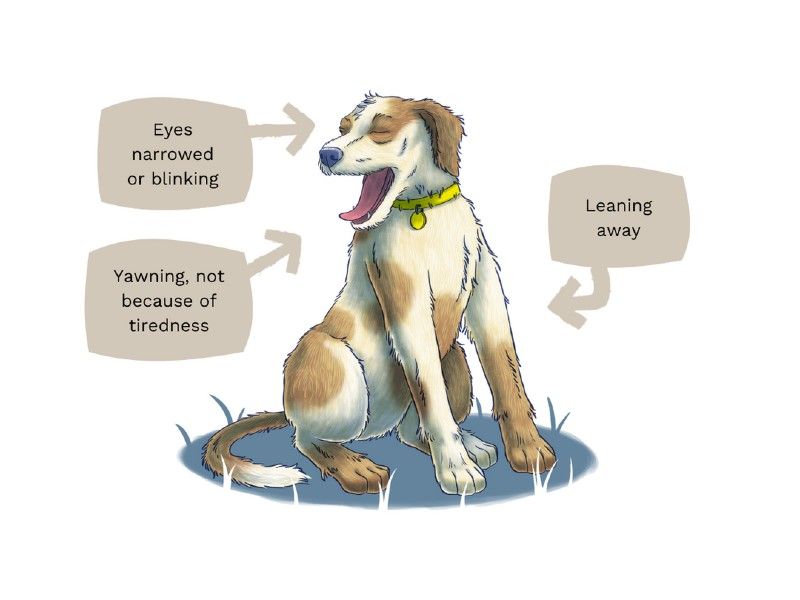
Credit: www.dogstrust.org.uk
When To Seek Professional Help
Recognizing anxiety in dogs is crucial for their well-being. Sometimes, professional help is needed to manage their anxiety effectively. Here’s how to know when to seek professional help.
Consulting With A Veterinarian
If your dog shows signs of anxiety, consulting with a veterinarian is essential. Veterinarians can rule out medical issues that might cause anxiety-like symptoms. They can also prescribe medications to help manage severe anxiety.
- Excessive barking or whining
- Pacing or restlessness
- Destructive behavior
- Changes in appetite
A veterinarian can provide valuable insights into your dog’s behavior. They can recommend lifestyle changes and suggest calming techniques.
Working With An Animal Behaviorist
For more complex cases, working with an animal behaviorist can be beneficial. Animal behaviorists specialize in understanding and modifying animal behavior. They can create a personalized plan to help your dog cope with anxiety.
- Initial assessment of your dog’s behavior
- Identifying triggers and stressors
- Developing a behavior modification plan
- Regular follow-ups to track progress
Behaviorists use positive reinforcement techniques to encourage desirable behaviors. They can also teach you how to manage your dog’s anxiety at home.
- Always seek professional help if your dog’s anxiety seems severe
- Consulting a veterinarian is the first step
- Animal behaviorists can offer specialized support
Conclusion: Fostering A Calm Environment
Creating a peaceful space for your dog can help reduce anxiety. Dogs thrive in environments where they feel safe and secure. This section will guide you on how to foster such an environment.
Creating Routine And Stability For Your Dog
Dogs feel more secure with a routine. A regular schedule for feeding, walking, and playtime can reduce anxiety. Make sure to stick to the same times every day.
Consistency is key. Ensure your dog knows what to expect and when. This predictability helps them feel safe.
Consider creating a daily timetable for your dog:
| Time | Activity |
|---|---|
| 7:00 AM | Morning Walk |
| 8:00 AM | Breakfast |
| 12:00 PM | Playtime |
| 6:00 PM | Dinner |
| 8:00 PM | Evening Walk |
The Importance Of Patience And Understanding
Patience is crucial in helping an anxious dog. They may need time to adjust to new routines or environments.
Understanding their body language can help. Look for signs like pacing, whining, or hiding. These can indicate anxiety.
Provide comfort and reassurance. A calm voice and gentle petting can go a long way.
Sometimes, professional help may be needed. A vet or a dog behaviorist can offer additional support.
Remember, every dog is different. What works for one may not work for another. Be patient and keep trying.
.jpg)
Credit: www.dogstrust.org.uk
Frequently Asked Questions
What Does Anxiety Look Like In Dogs?
Anxiety in dogs appears as excessive barking, panting, pacing, drooling, trembling, or destructive behavior. They may also become clingy.
How Do You Treat An Anxious Dog?
Treat an anxious dog with regular exercise, mental stimulation, and positive reinforcement. Use calming products like anxiety wraps. Consult a vet.
How Do Vets Calm Dogs With Anxiety?
Vets calm dogs with anxiety using calming techniques, medications, pheromones, and behavior modification. They may also recommend anxiety wraps.
Why Is My Dog Anxious All Of A Sudden?
Your dog might be anxious due to changes in environment, unfamiliar people, loud noises, or health issues. Consult a vet.
Conclusion
Recognizing anxiety in dogs is crucial for their well-being. Symptoms like excessive barking, trembling, and aggression are key signs. Addressing these behaviors can improve your dog’s quality of life. Consult a vet for proper diagnosis and treatment. Understanding your dog’s needs is the first step towards a happier, healthier pet.
- Can I Get in a Taxi Without a Car Seat? - January 26, 2025
- Can I Get Chlamydia From a Toilet Seat? - January 26, 2025
- Can I Get an Uber With a Car Seat? - January 26, 2025


